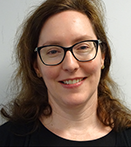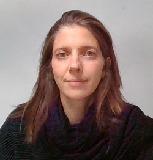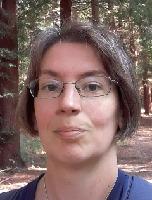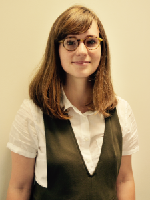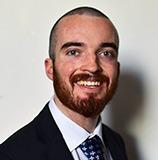Blog
Unless otherwise stated, content is shared under CC-BY-NC Licence
Benchmarking Access at National Archives of Australia
Rowena Loo is the Director, Digital Archives Innovation and Research at the National Archives of Australia.
Access – it’s the end goal of all digital preservation activity and the true test of our digital preservation efforts. After all, if no one’s going to access it, why preserve it? If it’s not technically possible to access it, how can we claim it’s been preserved? However, it’s all too easy to focus on the more immediate challenges of transfer, ingest and file format preservation, especially when broader public access can be limited due to statutory closure periods, or the sensitivity of the information involved.
While National Archives of Australia has been actively developing its digital archiving capability over many years, and had integrated access to digitised records into its public search engine, it was acknowledged that access to born-digital records had received less attention.
DPC RAM: Levelling up
Silvia Gallotti is an Archivist at the LSE Library.
The past
In 2019, my colleague Fabi Barticioti, LSE Digital Assets Manager, completed the DPC Rapid Assessment Model (RAM) to assess the status quo of LSE Library digital preservation. Fabi wrote a very useful blog post about this, where she also encourages colleagues to use this model.
At the time, the Library had only just acquired the DAMS and appointed a Digital Assets Manager. Based on digitised collections only, 6 out of 11 capabilities were scored at basic level and none at optimised level.
It is now my turn to give an update on where LSE Library is with digital preservation today.
Reflections on Imaging, Visualisation and Artificial Intelligence from the IS&T Archiving 2022 Conference
Gemma Evans is a Post-Doctoral Research Assistant on the National AI-Enabled Repository for Wales Project and attended IS&T Archiving 2022 on behalf of DPC member Aberystwyth University with support from the DPC’s Career Development Fund, which is funded by DPC Supporters.
The DPC Career Development Fund grant provided me with the opportunity to attend the recent Society for Imaging Science and Technology (IS&T) Archiving 2022 conference which took place virtually from 7-10 June 2022.[i] The theme of the conference was ‘State-of-the-art Imaging, Digitization, Preservation, and Access’ and included a wide range of panels covering themes such as computational analysis, art and imaging, visualisation, and new advancements in digitisation. The conference also offered the opportunity to view behind the scenes tours of imaging labs and cultural heritage institutions.
Preserving born-digital design and construction records: the #DPClinic
On Friday last week we held a #DPClinic session to highlight and celebrate the Technology Watch Report we made available to the wider community earlier this month. In this session, we invited Aliza Leventhal and Jody Thompson to discuss their report on Preserving Born-Digital Design and Construction Records with the community and answer any questions that emerged. We also wanted to use the opportunity to ask some questions of the attendees and find out their perspective on the topic.
Sharing the Load
Helen Dafter is Archivist at The Postal Museum in the UK
Readers of this blog will be well aware of the three legged stool of digital preservation. One key element of this stool is staff skills. For some time I have been concerned that digital preservation skills at The Postal Museum are concentrated in one member of staff (myself). This is undesirable in terms of both organisational and individual resilience.
Re:Use - it's about time
I was honoured to give a keynote lecture at the start of the International Digital Curation Conference in June 2022. The text below is a slightly adapted version of the talk which was also recorded and will be made available in due course.
I am grateful for the opportunity to speak today and for Kevin’s words of welcome and introduction. I’ve been tied up lately with an awful lot of detail. I am fine with that, but I won’t pretend it’s where I am happiest. So, I am grateful for the opportunity to step out away from the day to day and try to search a wider horizon.
The theme of iDCC this year is Re-Use. Time and effort and expertise are spent on digital curation and preservation because we anticipate and seek to enable the re-use of digital materials in the future. We recognise that re-use cannot be taken for granted – we have too many stories of how and why it can be hard to re-use resources – and we want to protect and transmit the significant efforts and benefits and opportunities with which our digital objects are imbued.
There is no re-use without preservation.
Analysing PDFs with the PyMuPDF library
This blog post is by Sebastian Lange, Software Engineer with the Bodleian Digital Library Systems and Services (BDLSS) department and Edith Halvarsson, Digital Preservation Officer with Bodleian Libraries’ department of Open Scholarship Support.
Analysing PDFs with the PyMuPDF library
Like many heritage institutions Bodleian Libraries holds a vast collection of PDFs, created in various flavours and software over the past 20 years. These documents have come to the libraries from diverse sources – such as digitization suppliers, academic depositors, and born-digital personal archives.
We wanted a quick and dirty way of scanning our PDF collections for particular features, tailoring these to the needs of the Libraries’ vast and diverse collections. Using the PyMuPDF library we created a small tool which helps us gather more information about the current state of our PDFs, especially but not exclusively, regarding their accessibility. While our PDF analysis tool is less detailed than validation tools (like veraPDF), using the PyMuPDF library can be a good first step for analysing PDFs and flagging potential high-level digital preservation risks.
Digitisation of The Scotsman Collection: Digital Access and Preservation at Historic Environment Scotland
Christopher Viney is Archive Digitisation Officer at Historic Environment Scotland
Over the past decade issues in access to archival collections have been thrown sharply into focus demonstrating the value of digitising analogue archival material. This provides a greater level of access and mitigates potential barriers that can often shut people out of our institutions. Indeed, digitisation and digital preservation provides a key tool in the work of Historic Environment Scotland to deliver on its vision ‘to make sure Scotland’s heritage is cherished, understood, shared and enjoyed with pride by everyone’. After the fantastic work of the Archive Digital Project, showcased in the online exhibition “Beyond the Physical”, Historic Environment Scotland has continued to improve access to and preservation of our collections. One such recent project has been the digitisation of The Scotsman Collection.
No time to waste: what’s ticking at CLOCKSS
Alicia Wise is Executive Director of CLOCKSS
Time is a thief of memory, even for formal publications, unless long-term digital preservation arrangements are in place. It takes a community to safeguard the scholarly record. It is too big a job for any single organisation, and too horrific for our species if done badly.
Reducing the pain of procurement
Michael Popham is Digital Preservation Analyst at the DPC and Jenny Mitcham is Head of Good Practice and Standards at the DPC.
Perhaps you’ve been given the go-ahead to procure a “digital preservation system”, or you’re trying to work out what differentiates such a system from the applications and infrastructure that you already have in place? How do you decide what you really need, especially in light of the rapidly evolving marketplace of commercial and open source preservation solutions? The DPC has recently launched a set of resources designed to help.













































































































































